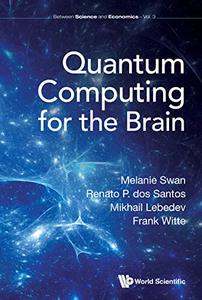
Quantum Computing For The Brain
by Melanie Swan;Renato P Dos Santos;Mikhail A Lebedev;Frank Witte;
English | 2022 | ISBN: 1800610610 | 551 pages | True PDF EPUB | 30.18 MB
Quantum Computing for the Brain argues that the brain is the killer application for quantum computing. No other system is as complex, as multidimensional in time and space, as dynamic, as less well-understood, as of peak interest, and as in need of three-dimensional modeling as it functions in real-life, as the brain.
Quantum computing has emerged as a platform suited to contemporary data processing needs, surpassing classical computing and supercomputing. This book shows how quantum computing's increased capacity to model classical data with quantum states and the ability to run more complex permutations of problems can be employed in neuroscience applications such as neural signaling and synaptic integration. State-of-the-art methods are discussed such as quantum machine learning, tensor networks, Born machines, quantum kernel learning, wavelet transforms, Rydberg atom arrays, ion traps, boson sampling, graph-theoretic models, quantum optical machine learning, neuromorphic architectures, spiking neural networks, quantum teleportation, and quantum walks.
Quantum Computing for the Brain is a comprehensive one-stop resource for an improved understanding of the converging research frontiers of foundational physics, information theory, and neuroscience in the context of quantum computing.
Contents:Introduction to Quantum NeuroscienceFoundations:Neural Signaling BasicsThe AdS/Brain CorrespondenceTabletop ExperimentsNeuronal Gauge TheorySubstrate:Quantum Information TheoryQuantum Computing 101Glia Neurotransmitter SynaptomeBlack Hole Information TheoryConnectivity:Quantum Photonics and High-Dimensional EntanglementOptical Machine Learning and Quantum NetworksConnectome and Brain ImagingBrain NetworksSystem Evolution:Quantum DynamicsNeural DynamicsModeling Toolkit:Quantum Machine LearningBorn Machine and Pixel = QubitQuantum Kernel Learning and Entanglement DesignBrain Modeling and Machine LearningConclusion: AdS/Brain Theory and Quantum Neuroscience
Readership: Thought-leaders, executives, industry strategists, research scientists, graduate students, advanced undergraduate students, policy-makers, research funding agencies, private research institutions, government regulators, investors, corporate managers, purchasing agents, and entrepreneurs in the areas of computer science, quantum computing, information theory, neuroscience, and physics.



